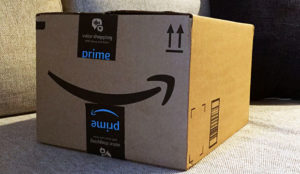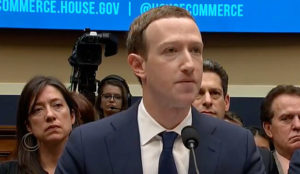As the U.S. retail industry puts another long holiday shopping season behind it, a few changes appear to be taking place.
For one thing, it appears there’s a new recipe for success. Growing a business requires more than setting up a fancy website, placing inventory into a warehouse, and engaging a service to make speedy deliveries.
That’s in part because customer expectations have changed. There are severe costs and challenges involved in building a successful e-commerce operation, and today’s customers have little patience for an online experience that falls short.
“As more and more retailers roll out mobile payment services, it’s critically important that they ensure their mobile apps maintain the same digital performance experience that their retail websites offer, or risk losing customers who are trying to make purchases over their mobile devices,” Dynatrace analyst David Jones told the E-Commerce Times.
Millennials, in particular, are rather unforgiving of mobile shopping sites that fail to deliver, suggest the results of a Dynatrace-commissioned multinational Harris Poll conducted just before Black Friday.
Eighty-one percent of millennials shopping with tablets or smartphones said they would walk away from a buggy, slow, or crash-prone mobile site or app.
Also 51 percent of them said they would broadcast their bad experiences across social media, which could result in great damage to a retailer’s reputation.
Overall, retailers must be ready to compete for millennial shoppers. Sixty percent of them planned to do more mobile shopping than they did a year ago, and 62 percent planned to use mobile apps in making in-store purchases, according to the survey, which included responses from 5,110 smartphone users in five countries — the U.S., UK, France, Germany and Australia.
Another key component of the mobile shopping experience is growing demand for retailers to offer a ship-to-store option. That typically involves a customer ordering from a home, office or laptop computer or smartphone app, and then picking up the order directly from the store. Some customers order on behalf of others from a remote location — parents for their kids away at college, for example.
For traditional stores to have both the proper inventory and the technology available to give customers the right product in a timely manner is often a difficult task, noted Curbside CEO Jarod Waldman.
Curbside’s mobile app lets customers buy from traditional brick-and-mortar retailers, and quickly and efficiently pick up their orders.
“What we’ve developed at the core is a very noninvasive way to notify stores that the customer is waiting outside for pickup,” said Waldman.
Sears, which is facing brutal competition with Target, has been a leader of the trend to let online customers pick up merchandise on the same day.
Sears, founded in 1886, started out as a major mail order department store, allowing customers both to buy in-house and order goods from the legendary Sears catalog — which, for many rural customers, was the only means of accessing essential goods.
Sears offers customers the option of making transactions online and then picking up or returning goods at a store, using the in-vehicle feature of the Sears app. They can drive to a designated parking area and pick up, exchange or return an item in five minutes.
“We’re taking the stress out of shopping and letting them shop with us wherever, whenever and however they choose,” said Leena Munjal, senior vice president for customer experience and integrated retail at Sears Holdings.
Fulfilling the Order
Another problem that plagues e-commerce companies is achieving fast, accurate fulfillment. Many online companies have large regional distribution centers with millions of products stored in large warehouses.
To meet that need, Newegg deployed Honeywell’s Vocollect, which uses a combination of radio frequency and voice recognition-enabled headsets to achieve radical improvement in the performance of its warehouse workers, who process more than 10 million packages per year.
The Newegg Memphis distribution center, which processed about 30 percent of its orders, was transformed from one of its lowest-performing facilities to one of the best, as the technology helped reduce errors by 23 percent, according to the company. The devices — headsets that pick up SKU orders from warehouse workers — helped reduce training time for new employees in an environment that relies heavily on seasonal workers.
“We’re faced with the significant challenge of fulfilling customer orders on time,” said Kunal Thakkar, senior vice president of operations at Newegg. “‘Because we receive thousands of orders an hour, we need to invest in technologies to automate and optimize processes.”
Honeywell has worked with a wide variety of companies to make warehouse operations more efficient using the Vocollect devices. It has been beta-testing the technology with grocers in the U.S. and Europe that want to expand their businesses to process online orders at the store, according to Honeywell spokesperson Eric Krantz.
Full versions of the Vocollect systems are expected to roll out during the first half of 2016, he told the E-Commerce Times.
Overnight Delivery
Delivery of packages to customers is one of the biggest nuts to crack in the e-commerce chain. It is not only costly and time consuming, but also chancy, in that it often requires the retailer give up control of the process to a third party.
Amazon most famously fell victim to that pitfall during recent holiday seasons, when millions of packages were delayed due to logistical problems and sheer overload at the U.S. Postal Service, UPS and FedEx.
Amazon has been testing various options to take control of its own delivery service. The company last year launched Amazon Flex, a two-hour delivery service that pays local delivery workers up to US$25 to deliver goods for Amazon Prime customers.
Flex currently is available in the Seattle, Richmond, Nashville, Austin, Dallas, Baltimore, Miami, Atlanta, Houston, San Antonio, Las Vegas, Phoenix, Minneapolis, and Indianapolis metro areas.
The company also has begun looking into buying its own fleet of aircraft. It has begun testing its own truck fleet, and it recently acquired the remaining stake of Colis Prive, a France-based delivery company in which it held a 25 percent stake.
UPS enjoys a good working relationship with Amazon, said spokesperson Natalie Norrington, but she declined to get into specific details of their relationship. Amazon is only one of many e-commerce companies that uses UPS services.
Overall, UPS remains a massive distributor of e-commerce packages. The company delivered more than 300 million packages in 2014, Norrington told the E-Commerce Times, which averages out to more than 14.3 million per day.
Forty-five percent of UPS’ e-commerce deliveries went to residential addresses in 2014. Residential deliveries as a percentage of total business are expected to grow by 50 percent over the next five years, Norrington noted.
The company is aware that peak season delivery requires taking steps to expand capacity.
“During peak 2015, UPS increased its use of advanced scanning and sorting technology in more facilities to improve processing capacity,” said Norrington, “and upgraded visibility systems so that we had a more precise knowledge of all transportation assets during the holidays.”























































As a proactive business owner, you want to grow your business and attract more & more audiences towards your store. Brand and relationship are main factors for physical stores but in terms of online retailers, they have derived the traffic from various online channels.
In physical commerce, there are numerous costs involved in managing inventory. It costs time and money to manage inventory. The physical way to manage inventory is boring and expensive. However, it is easier and cheaper to manage inventory on the ecommerce website.
An agile online store development solution provides best functionality and features that can be used to automate certain responsibilities. An example of such liability is inventory management. It is a web-based system where you can automate file on your web page. Once you have automated it, the system will manage inventory for you. This allows you time to do other things and also reduces the running costs of your online store.
Great article about e-commerce and e-commerce websites! Very informative! Be sure to check out our e-commerce website at gwazoo.com feel free to drop us a line and let us know what you think or how we can improve!